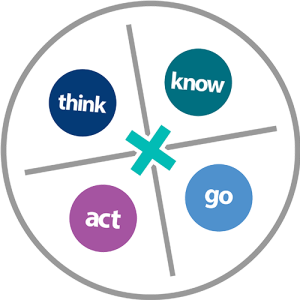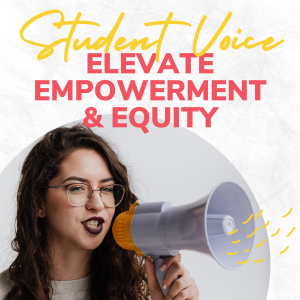 As the Associate Director of Transfer Admissions at Long Island University (LIU) Brooklyn, I met each day with students to discuss their higher education goals. It was my job to review their transcripts from their previous school with them, recommend classes they should be taking, and discuss the requirements of LIU’s programs. But, more often that not, it seemed my job was to deliver bad news to the student sitting across from me—that the classes they took, paid for, and spent their time on were not transferrable.
As the Associate Director of Transfer Admissions at Long Island University (LIU) Brooklyn, I met each day with students to discuss their higher education goals. It was my job to review their transcripts from their previous school with them, recommend classes they should be taking, and discuss the requirements of LIU’s programs. But, more often that not, it seemed my job was to deliver bad news to the student sitting across from me—that the classes they took, paid for, and spent their time on were not transferrable.
This was usually for one of two reasons: 1) The classes were remedial and therefore not transferrable into a degree program, or 2) The classes were from an unaccredited institution. Unfortunately, most students had no idea this was the case.
[vc_row][vc_column][vc_column_text][dt_quote type=”pullquote” layout=”left” font_size=”big” animation=”none” size=”1″]LIU is located in downtown Brooklyn, New York, in one of the more culturally diverse areas of the nation. Our students were often first-generation college students, the children of immigrants, who wanted to earn their education but did not know how to navigate that path. So, without parental or school guidance, many ended up being persuaded into attending an unaccredited school, thinking that in two short years they’d be able to get either a decent paying job or enough credits to transfer into a bachelor’s program. They did not know the difference between being accredited or not, they did not know that the remedial classes they’d been taking for a year wouldn’t transfer in, and they did not want to hear that they would have to start over from the beginning. Most of these students had already exhausted their federal and state aid taking these courses, so now they were not only unable to move forward with their education, they were riddled with debt.[/dt_quote]
Their reactions ran the emotional gamut, from yelling at me in anger to sobbing in my arms out of frustration. This was, without a doubt, the absolute worst part of my job.
There is a major problem in our higher education system right now. Students are coming into college underprepared and unaware of the paths and opportunities available to them. On the flip side, some colleges and universities operate in isolated bubbles: on one hand, unaware of exactly what it is employers want from graduates; on the other hand, unaware of how students are being prepared (or not) prior to stepping onto campus. There is a major disconnect occurring, and not enough institutions are working outside of themselves to fix it.[/vc_column_text][ultimate_spacer height=”20″][vc_column_text]
Connecting Credentials
Thankfully, EPIC, along with the Lumina Foundation, the Corporation for a Skilled Workforce, and other cosponsors, have recognized these problems and come up with suggestions to help address this national issue. Connecting Credentials provides us with an action agenda highlighting Seven Priority Areas that we need to focus on now in order to see improvements in the future.
Of the Seven Priority Areas, I’d like to focus on the three that I see as having the most immediate impact on students. First, we need to “Empower learners to navigate the credentialing ecosystem.” In short, we need to teach students how to navigate the post-high school world. Students need to learn the difference between degree and certificate programs, how much a program will cost, and how they plan to pay for it. They need to be made aware of the different career pathways available to them and what prerequisite courses are needed for that pathway.
By strengthening their advising, schools can help all learners—especially low-income, minority, and other underserved and underrepresented learners—navigate the choices before them to make the most informed decisions regarding their educational future and career options. By bringing in business and community stakeholders, students will learn what is expected of them when they enter into the working world, as well as how to communicate to employers the skills and knowledge they have attained.
Although it is incredibly important to make sure students understand what is required of them and the options available to them, we also need to guarantee the quality and consistency of the courses they are being taught. Therefore, it is important to “Foster shared understanding of credential quality among stakeholders and reciprocity among quality assurance processes.”
What makes this process difficult is that different stakeholders may have varying definitions of what quality assurance means. Without having a consistent method to assess the quality of education our students are receiving, it is challenging to understand or trust that quality is being assured across credentials.[/vc_column_text][ultimate_spacer height=”20″][/vc_column][/vc_row][vc_row][vc_column width=”1/2″][vc_column_text]
The Bridge Method
EPIC has developed its own quality assurance program called The Bridge Method. It allows instructors from within the same institution, or in conjunction with other schools in their district or local community colleges, to compare their syllabi to see if they are meeting set educational standards in order to align their curriculum.
By aligning their curriculum, schools can reduce the number of remedial courses needed, student retention increases, timely completion rates rise, and more students become college and career ready. Curriculum alignment helps students to transition smoothly through their high school career and beyond, increases high school graduation rates and college matriculation rates, and introduces more skilled students into the workforce.
The key to curriculum alignment and to increasing quality assurance is transparency among institutions, instructors, and stakeholders. All parties need to be willing to come to the table and engage in open and honest conversation about the work they are doing. By doing so, they will create an environment of trust, with the underlying knowledge that all want to provide the best opportunity and education to their students.[/vc_column_text][/vc_column][vc_column width=”1/2″][dt_call_to_action background=”fancy”]
Merced Union High School District
In February of 2016, EPIC began a partnership with Merced Union High School District (MUHSD) in California to support the districtwide development of a robust and aligned career and technical education (CTE) curriculum. Articulating appropriate standards with CTE pathways and then sequencing a vertically aligned curriculum to a capstone course that is horizontally aligned with an appropriate college-level course will provide students with seamless pathways from high school to community college or preparation for transfer. With EPIC’s support, MUHSD will be working toward a strong academic coherence in their CTE program that will ensure student success. For more information on the work that EPIC has done in Merced, please click here.[/dt_call_to_action][/vc_column][/vc_row][vc_row][vc_column][ultimate_spacer height=”20″][vc_column_text]
Once quality has been assured, it is imperative to make sure that all students have the opportunity to earn marketable credentials. Policy barriers make it difficult for underserved and underrepresented populations, particularly racial and ethnic minorities and persons of low income, to attain marketable credentials.[/vc_column_text][ultimate_spacer height=”20″][vc_column_text]
Recommendations
Connecting Credentials makes several recommendations on to how increase equity for all U.S. students, most notably leveraging “federal, state, regional, and institutional policy, investment, and capacity to create credentialing pathways and stackable credentials that benefit all learners—particularly populations that have been historically underserved and underrepresented.”
They suggest that federal and local monies be used to implement guided pathways across K–12 through higher education, with the goal that all pathways lead to articulation and transfer agreements. By implementing guided pathways, institutions will help reduce the number of unnecessary classes that students take, thus leading to less financial debt.
The problems facing the U.S. education system are vast and complicated, and no single solution will be able to fix it all. But, if institutions are able to implement several of the changes suggested by EPIC and Connecting Credentials, they can begin to change the way they teach their students and greatly alter their futures for the better.[/vc_column_text][/vc_column][/vc_row]
by Katie Cush




